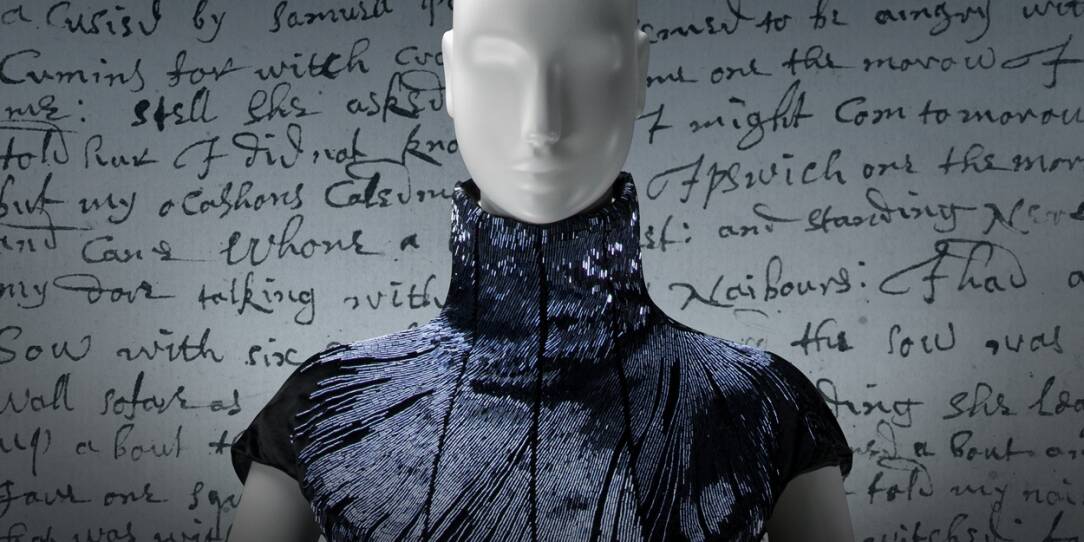This week, GBH Executive Arts Editor Jared Bowen recommends the Peabody Essex Museum’s contemporary look at the Salem With Trials featuring work by fashion designer Alexander McQueen, and a retrospective of Cuban artist Mariano Rodríguez.
"
The Salem Witch Trials: Reckoning and Reclaiming" at the Peabody Essex Museum through March 20, 2022

The Peabody Essex Museum revisits Salem’s infamous history in a new exhibit. It aims to give people a sense of what real life was like in the 17th century, with rare documents and historic objects like furniture and walking sticks. “The Salem witch trials arose out of this time when there was political uncertainty,” Bowen says. “There was extreme weather, lots of climate change. There was not a lot of faith in the community. There was a lot of speculation and cynicism. ... I think some of these themes are very, very prevalent in 2021.”
The exhibit features two contemporary artists who lend their modern perspective, including Frances F. Denny, who photographs women who identify as witches, and the British fashion designer Alexander McQueen, whose mother was an amateur genealogist and discovered that their ancestor Elizabeth Howe was tried, accused and executed in Salem.
“These are all the things that we wish our ancestors could have experienced during this crisis,” said associate curator Lydia Gordon said to Bowen about McQueen’s collection. “And here it is, manifesting in a work of art and an ensemble in a dress that serves as armor and a garment that helps form identity and how we see ourselves and each other out in the world. It's an incredible response.”
"Mariano: Variations on a Theme” at McMullen Museum of Art at Boston College through Dec. 5

The McMullen Museum presents the first major American exhibition of the Cuban modernist painter Mariano Rodríguez, featuring more than 140 works from his long career through the 20th century. “This is really an excavation,” Bowen says of the retrospective, in which Mariano examines themes central to Cuba, from fruit to vegetation to marine subjects. He lived in Mexico and New York, picking up influences along the way from prominent artists like Picasso, Matisse and Goya. One recurring image is the rooster, which Bowen discussed with curator Elizabeth Thompson Goizueta.
“What is the rooster? The rooster is a bad boy, the rooster is cocky and the rooster is proud. And the rooster really is all about male virility and the countryside and battle. And all of that is wonderful,” Goizueta said. “So it has all these kinds of sexual overtones to it. I think that in the end, it has given Mariano a limited appreciation for his entire scope of his work. Because Mariano was more than the cock, he was more than the rooster.”



